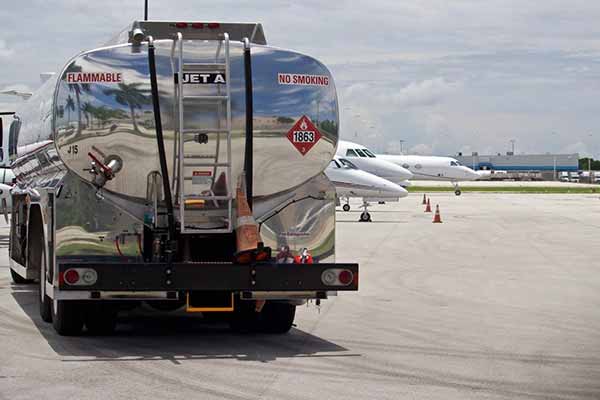An airline is set to test sustainable aviation fuel as the industry looks to bounce back from the COVID-19 crisis and emissions-related climate change.
Delta Air Lines’ trial of sustainable aviation fuel (SAF) could pave the way for a paradigm shift in energy for the industry.
The company will use a Chevron-produced SAF test batch in trial flights from Los Angeles airport (LAX). Google cloud-based technology will track the biofuel’s emissions and deliver data-driven reports about SAF’s performance and environmental impact.
Delta, the world’s third biggest airline by passenger miles flown in 2020, aims to replace 10% of its jet fuel with SAF by 2030. It hopes a successful test will lead to greater biofuel adoption across the aviation and general transport industries.
What Is Sustainable Aviation Fuel?
Sustainable aviation fuel (SAF) is produced from sustainable feedstocks. Feedstocks include cooking oil, animal or plant waste, or solid waste that may have gone to landfill sites. These waste products are processed to create a biofuel chemically similar to modern jet fuel but producing 80% fewer lifetime carbon emissions.
All aircraft that run on jet fuel can use SAF. The biofuel performs identically from storage to delivery, meaning current airport infrastructure can easily handle a switch to SAF.
However, sustainable aviation fuel is more costly to produce than jet fuel. It is currently used in just 0.01% of aviation fuel worldwide.
Chevron wants to reduce biofuel production costs thanks to a joint venture aiming to improve soybean processing with Bunge North America, the world’s largest oilseed processor. The pair hopes to increase production yields, reducing the costs and carbon emissions of biofuel production.
A Shining Light After a Challenging Year for Aviation?
Aviation and increased passenger numbers are often cited as a critical battleground in fighting CO2 emissions and climate change.
In 2019, transport contributed to 14% of all global carbon emissions, with 95% of its energy use coming from petroleum. Aviation alone was responsible for 2% of the world’s CO2 emissions.
However, passenger numbers plummeted by 60% in 2020 thanks to the COVID-19 pandemic, down to 1.8 billion passengers from 4.5 billion passengers the previous year. Jet fuel and kerosene use are estimated to have plunged by 40% as companies grounded planes worldwide.
Still, the aviation industry is predicted to triple in size between 2019 and 2050. Delta, Chevron, and Google hope a successful test batch will lead to a data-driven adaptation of SAF across the board.
“As aviation continues to define a more sustainable future, understanding the environmental impacts of our operations will be paramount as we look to mitigate climate change,” said Amelia DeLuca, Delta’s managing director of Sustainability.
The United States at the Center of Biofuel Development
Delta’s sustainable aviation fuel testing in the United States is befitting due to the country’s love of flying and driving.
In 2019, transport was the largest single polluter, belching out 29% of the country’s CO2 emissions. Aviation was responsible for 10% of that total, a level five times greater than the rest of the world’s flying emissions.
Technological improvements, such as SAF implementation, could help solidify the United States’ position at the forefront of biofuels. The U.S. led the world in biofuel production and consumption in 2020, followed by Brazil then the European Union.
What Will Win the Race for Cleaner Skies?
More than eight in 10 people think travel habits will change post-COVID, and almost a third claim they will fly less.
Logistics provider DHL hopes to start shifting cargo with 12 electric aircraft in 2024 if a trial this year succeeds. Hydrogen-powered planes, more efficient planes, and carbon offsetting are other options mooted.
Adopting sustainable aviation fuel may become key to increasing passenger numbers while reducing emissions.
Opinion writer: Tom Shearman
The opinions, beliefs, and viewpoints expressed by the various authors do not necessarily reflect the opinions, beliefs, or viewpoints of Interactive Energy Group, LLC (IEG) or its parent companies or affiliates and may have been created by a third party contracted by IEG. Any content provided by the bloggers or authors are of their opinion and are not intended to malign any individual, organization, company, group, or anyone or anything.
Brought to you by energysavings.com
All images licensed from Adobe Stock.
Featured Image

